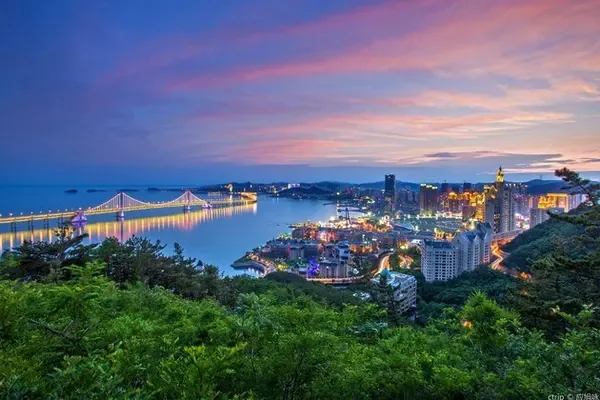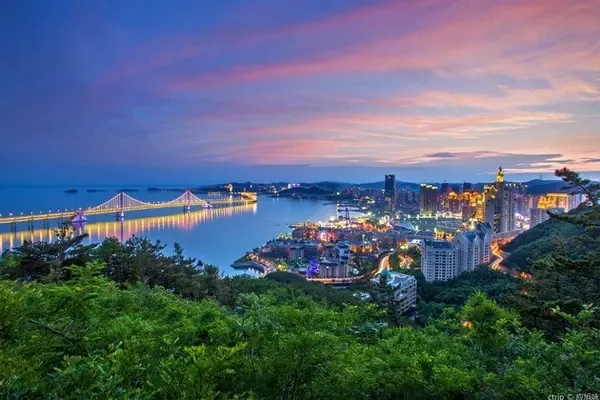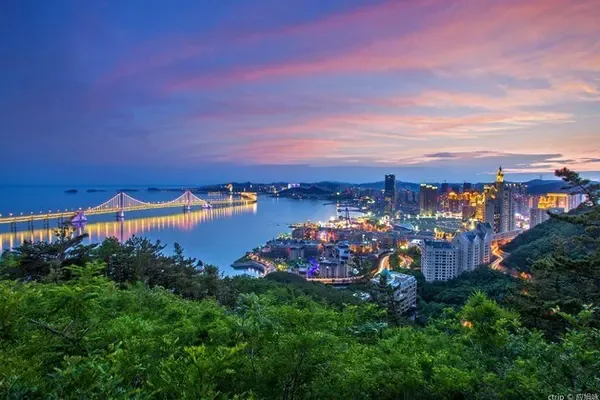On the occasion of the 70th anniversary of the liberation of Qamdo in 2020, the CPC Qamdo Municipal Committee and the Municipal Government held a series of celebration activities in October 2020. Among them, the sixth "Crossing the Hengduan Mountains and Retracing the Road of Jinzhu Mami" tourism check-in activity kicked off in Jiangda on October 7.
On the special day of the 70th anniversary of the liberation of Tibet, the organizer of the event sincerely invited the delegation of the children of the 18th Army to participate in the red tourism of re-walking the road of their fathers into Tibet and the 6th "crossing the Hengduan Mountains and re-walking the road of Jinzhu Mami" The check-in activity is to jointly recall the glorious journey of the 18th Army's entry into Tibet, and pay tribute to the "Old Tibet" spirit of the 18th Army and the spirit of the two routes.
On October 6th, nearly a hundred travellers, photographers, internet celebrities, and media professionals from inside and outside Qamdo arrived in Jiangda in several station wagons from Changdu. "Tourist scenic spot activities to do relevant preparations.
At 12 o'clock in the morning on October 7, the delegation of the 18th Army arrived at the junction of Sichuan and Tibet, followed the road their fathers walked 70 years ago, crossed the Jinsha River, and set foot on the land of Tibet. The arrival of the delegation was warmly welcomed by leaders such as Li Shijiang, secretary of the Jiangda County Party Committee, member of the Standing Committee of the Qamdo City Committee, Zhao Jianguo, director of the Propaganda Department of the Standing Committee of the Qamdo City Committee, and people from all walks of life.
Afterwards, the delegation of the 18th Army's children and nearly a hundred guests from Qamdo, tourism experts and media personnel went to the Gangtuo Village of the 18th Army to fight and cross the river to recall the sacrifices and contributions made by the ancestors who fought bloody battles for the liberation of Tibet. .
During the period, the delegation of the children of the 18th Army also visited the Jiangda Tourism Photo Exhibition held in the Gangtuo Red Tourist Area, and enthusiastically participated in a series of activities such as the exhibition and sales of native products organized by local farmers and herdsmen.
After the activities in Gangtuo Village, everyone took several travel buses to Hongqi Square and was welcomed by the local people again. The descendants of the 18th Army took photos together in front of the huge statue of PLA soldiers.
Finally, everyone came to the site of the 18th Army barracks to watch the video materials and real objects of the 18th Army soldiers in Jiangda, Qamdo and Tibet.
The descendants of several generals took a group photo in front of a large photo of their parents.
Among them, Wang Changwei, the daughter of General Wang Qimei, walked to her father's photo and stared quietly for a long time, then walked forward slowly, wiped the photo repeatedly, touched her father's resolute cheek with trembling hands, and murmured: " This is my dad, this is my dad." This affectionate action made everyone present emotionally moved, with tears in the corners of their eyes.
The group of tourist experts who have been following the children of the 18th Army to visit the Gangtuo Red Tourist Area was inspired by the spirit of the revolutionary ancestors. Regardless of fatigue, they continued to follow the revolutionary road that Jinzhu Mami walked back then, punching Jiangda Famous scenic spots in the county.
The team first went to the Sherpa Secret Valley near the Hongqi Square in Gangtuo Town. The Sherpa Secret Trail Valley Ecological Scenic Area is about 13.5 kilometers long and about 3 kilometers wide between mountains. On both sides of Xuepa Secret Path Valley, there are snow-capped mountains and dense forests. The mountains are towering, steep and straight, with cliffs and overlapping peaks. The wide valley bottom in the middle is green with green vegetation, gurgling streams, colorful and green grass.
Along the way, there are Sherpa Tibetan villages, snow-capped wetlands, and Sherpa alpine lakes. Many caves, springs, scriptures, and lion-like stone statues were also found on the mountainside. Entering the Sherpa Hidden Path Valley, changing places and changing scenery, the tourist team is dazzled, and the photographers' guns and short cannons are ringing non-stop, which is very enjoyable.
On the mountainside on the left side of the Mijing Valley, there stands a Sakya temple, Zangtuo Temple, which is majestic. There are only two thousand-armed Avalokitesvara statues in the temple, which are rare treasures. There are also the Tara of the source of wealth and the statue of Huang Caishen, who have excellent marriages with all living beings. They are the Holy Land of the Three Jewels where all living beings can obtain blessings, wisdom and supreme benefits! The temple is especially famous for blessing "marriage", and it is a must-go place for wishing and fulfilling wishes. The unique Tibetan operas such as "Prince Nuosang" performed locally are mainly kept in Zangtuo Temple.
Leaving the Sherpa Secret Valley, the team came to the Wala Temple next to National Highway 317. The temple belongs to the Sakya Sect of Tibetan Buddhism, commonly known as "Flower Sect", and is one of the early Sakya Sect temples with greater influence in Qamdo. The treasures of the town temple are a very delicate copper gilt Buddha statue of Sakyamuni and a statue of Dharma protector carved from willow. So far, there are 256 Buddha statues and more than 100 thangkas in the temple, including a unique mural - King Gesar and his generals. The long-scroll ancient murals of King Gesar are brightly colored and rich in content, and have dual aesthetic values of religion and art. It is famous for its long history, large scale, great influence and rich culture.
The whole Wala Temple consists of three parts. In addition to the "Wuming Buddhist Academy" which was inscribed by Zhao Puchu, the former president of the Chinese Buddhist Association and the president of the Chinese Buddhist Academy, next to the Wala Temple, there are also monks who retreat on the opposite cliff. The place of practice - Varadchen Temple.
After checking in at the Wala Temple, the team came to Xiawu Folk Village, a paradise-like Tibetan village deep in the mountains. Xiawu Village is a huge gentle slope area surrounded by high mountains. The wide and flat land is completely different from the surrounding towering mountains and steep cliffs.
Due to the rich flat and open land resources, the typical Tibetan-style houses in the village are scattered everywhere like pearls. In addition to farming and grazing, the villagers who are full of enthusiasm for life will plant many flowers in front of and behind their houses in their spare time. They interpret the meaning of happiness with the simplest way of life. Maybe this is what we yearn for!
Feeling the open plain scenery of Xiawu Village, the tourism team was shocked by the Jirong Grand Canyon in Poluo Township, Jiangda County. Entering the canyon, clear water and green mountains along the way, bushes, wild apricots, and wild peaches grow on the banks. In the canyon with abrupt walls, the east, west, north, south and north are towering cliffs reaching a height of more than 200 meters.
The canyon is 3,000 meters deep, and the road turns to peaks, with a myriad of scenes. There are bright and eye-catching cliff carvings of Tibetan Buddhist scriptures on the cliffs, a "treasure cave" hidden on the mountainside, and moving legends about King Gesar and Princess Zhumu.
It was getting late, and the team came to the last check-in point - Guopu Baizong Ecological Tourist Area. Guopu Baizong sacred mountain has beautiful scenery and many scenic spots. According to local people, there are Tiger Cave, Gaming Cave, Ape-Man Toilet, Right-handed Conch, Lotus and Peanut Cultivation Cave, and Buddha Boxes on the mountain. According to the lamas who practiced on the sacred mountain, this sacred mountain is the sub-mountain of Zari sacred mountain in the southern area of the mountain.
Guopu Baizong Shenshan Eco-tourism Area is a sea of prayer flags. The colorful and continuous prayer flags form a prayer flag array, all over the mountains and plains, clusters and clusters, floating and swaying between the earth and the sky, connecting the ground and the sky. Then, convey the pious wishes of the Tibetans to the gods and gods, so that the mountains are also endowed with brilliant colors.
The rich natural scenery and cultural landscape of Jiangda County have left a deep impression on the children of the 18th Army and tourists from all over the world. Everyone said that although the trip is in a hurry, this event is one of the series activities for the 70th anniversary of the liberation of Qamdo , It is of extraordinary significance to retrace the road of Jinzhu Mami back then.
In the future, when the right opportunity arises, we will once again invite tourism experts from all over the country to deeply experience the beautiful scenery and simple humanistic features of "Zhuo Zhuo Khamba Recalling Jiangda".
More exciting, so stay tuned!



